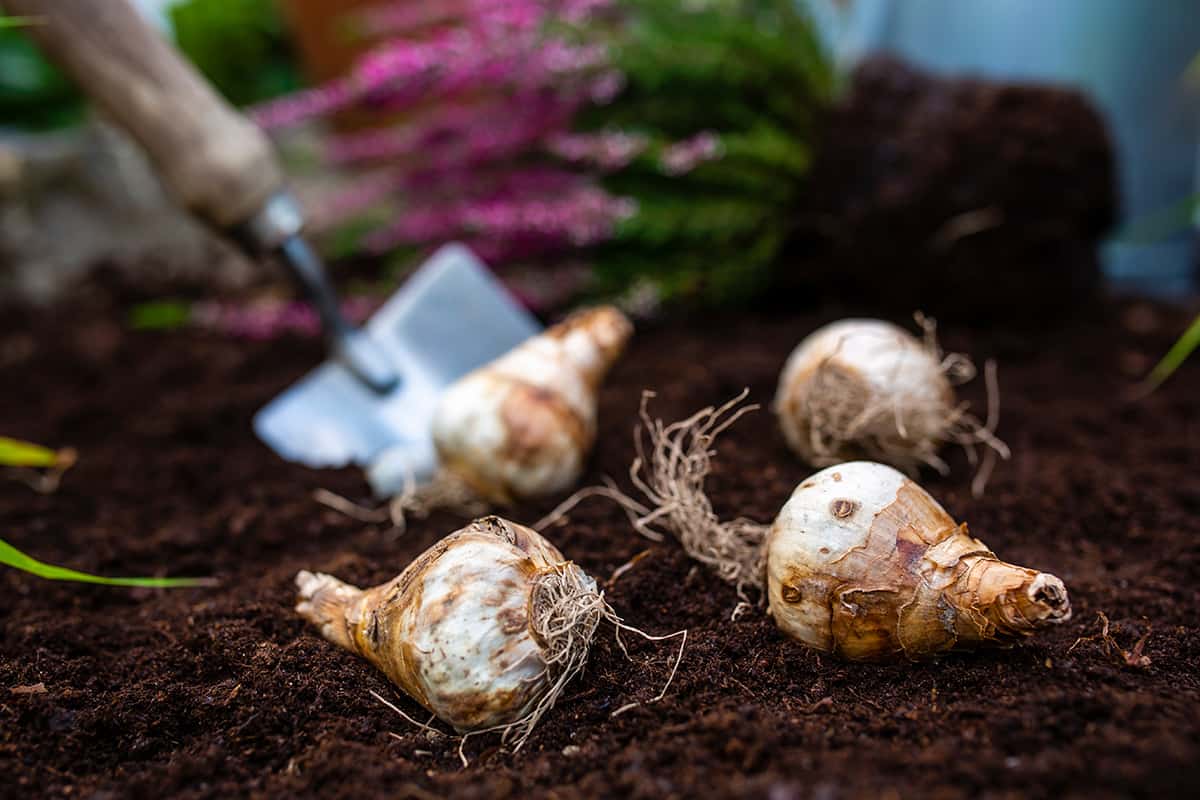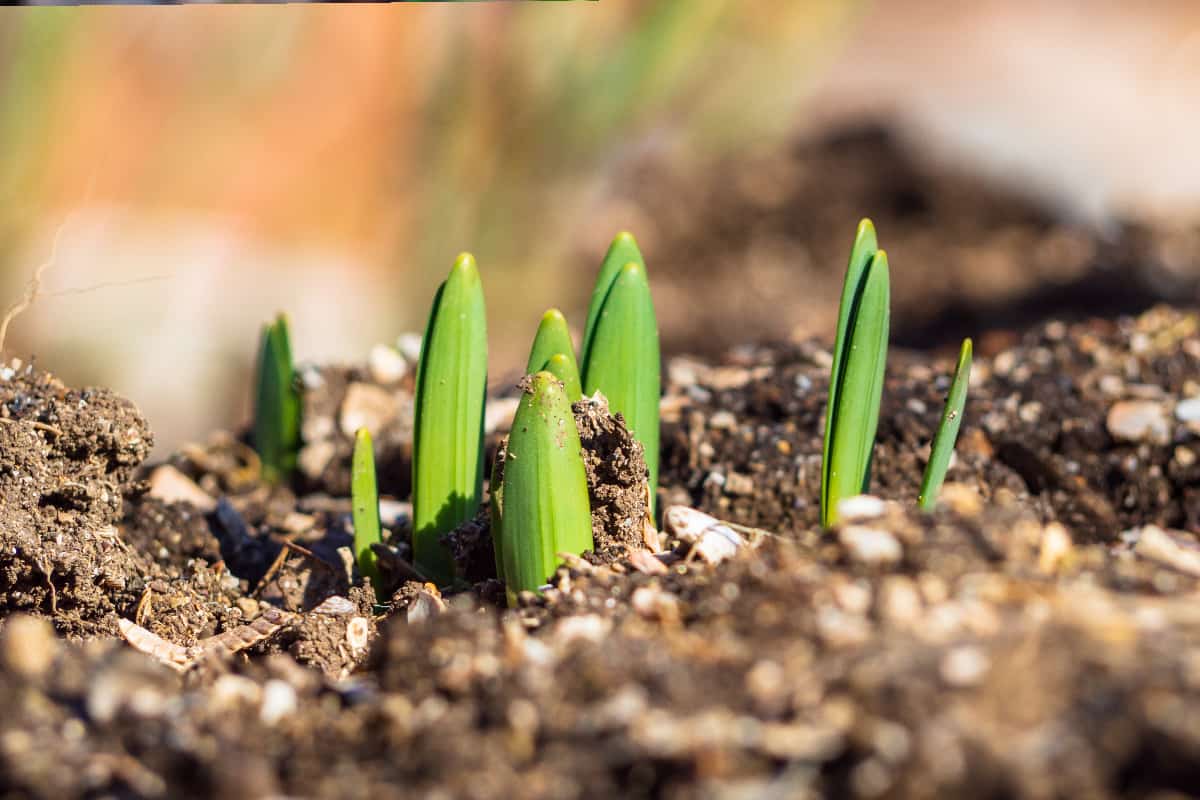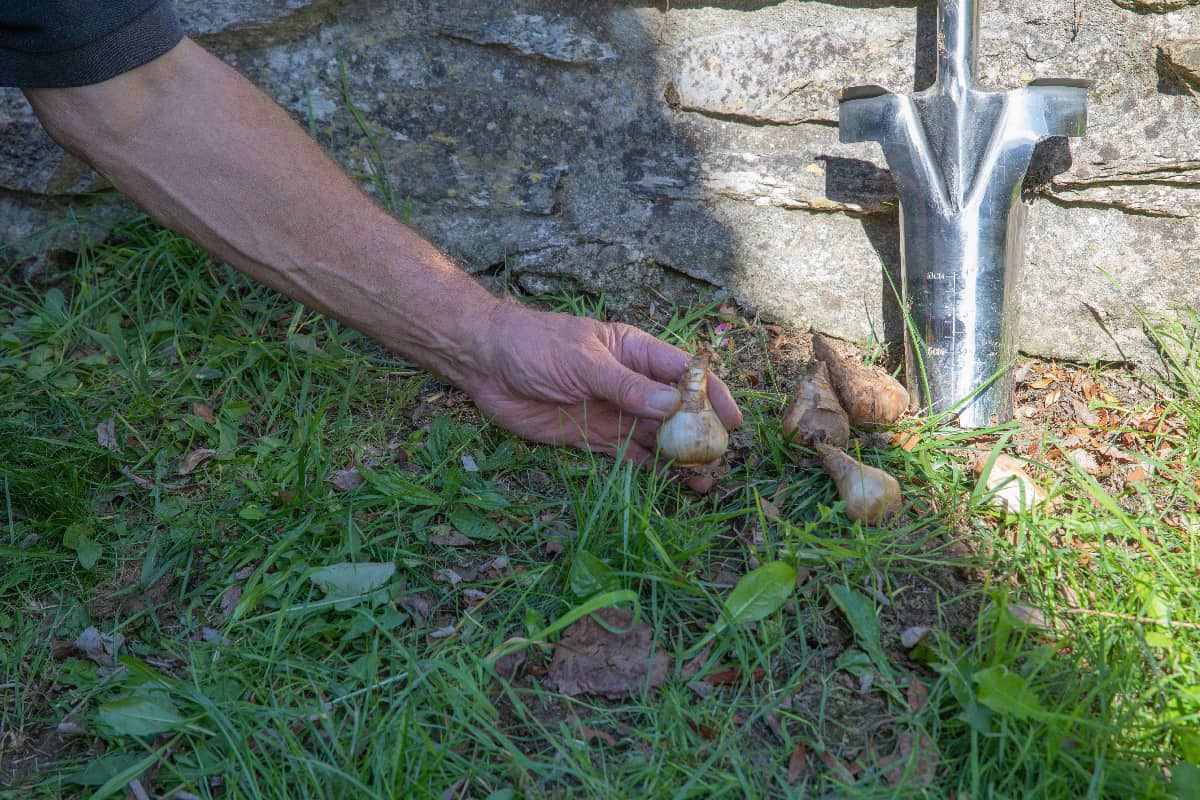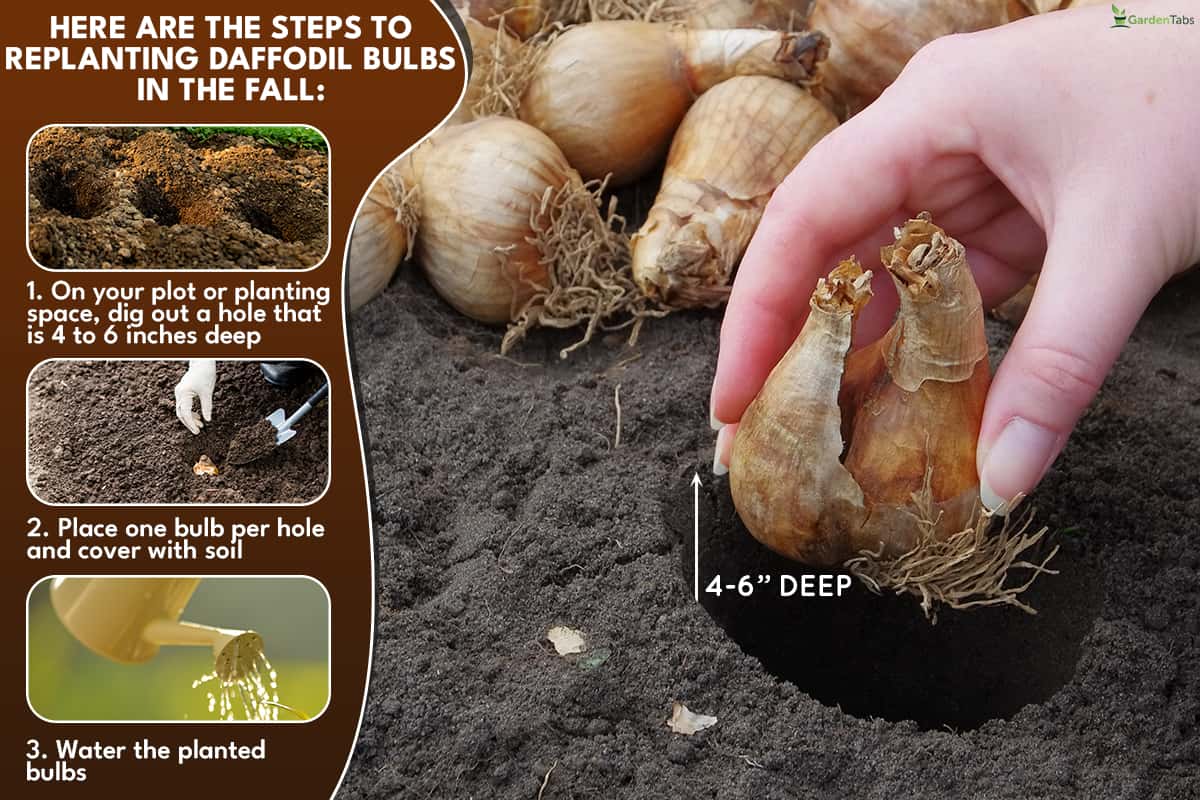As they grow, daffodil bulbs multiply. While it is not necessary to divide daffodil bulbs, you may want to divide and store them if you do not plan to replant them until next season. In this post, we have researched to guide you on doing just that!
Divide daffodil bulbs when the leaves start to brown or fade. You will now be able to prepare them for the next season. Here are the steps on how to divide the bulbs:
- Carefully dig out the daffodil bulbs
- Clean off the soil from the bulbs
- Separate the bulbs from each other, ensuring the roots are still intact
Separate the bulbs with your fingers. The roots of the bulbs may be tangled together, so be gentle and patient when working them apart.
Now, store or cure the daffodil bulbs for planting next season. Once the bulbs are divided, remove the roots. Clean and dry them off completely. Afterward, store them in a cool, dry place.
You must check the bulbs regularly to ensure they are not growing mold or rotting. Also, avoid exposing them to extreme temperatures.
Since daffodils are hardy plants, you can expect them to last a long time and continue to multiply with enough care. A lot more goes into dividing and storing daffodil bulbs, especially as it grows throughout the year. To learn more about this, read on!
Can You Divide Daffodil Bulbs In The Fall?
You can divide daffodil bulbs in the fall, assuming the foliage has already died. This is the primary sign that it is time for you to dig up the bulbs and divide them. However, this does not usually happen around the fall months.

Daffodil foliage may still be green during the fall months, which are around September to November. However, if you are planning to store them, it would still be okay to dig them out.
Fall is a great time to replant daffodils. Even if it is not yet time to divide the bulbs, you can still dig them out for storage. You will, however, end up cutting off still-green foliage. Also, note that the soil must still be workable during this time for you to replant successfully.
In general, daffodils are planted in October. You can also plant them a little earlier so that they have enough time to grow a healthy root system. When winter ends, and spring rolls around, they will start to bloom. You do not have to worry about dividing bulbs for a few years after planting.
Can You Divide Daffodil Bulbs Between The Winter?

You are much better off leaving your daffodil bulbs alone during the winter. However, it is possible to store or cure them for planting next season. However, note that if you want your daffodils to bloom within the year, consider planting them before winter rather than after.
While dividing daffodil bulbs during the winter is possible in theory, it is not a good idea. During this time, the daffodil bulbs prepare to grow and bloom in spring. It is best to leave them in the ground and to hold off on dividing the bulbs until the following year.
The ground is much harder during winter and is also covered in snow, depending on where you live. Only divide bulbs already out of the ground or in storage during this season.
Can You Divide Daffodil Bulbs In Spring?

You can divide daffodil bulbs in the spring. But, much like during the fall, you will likely be digging up still-green daffodils. If you planted your bulbs last fall, it would still be too early to divide any of the bulbs. You must wait a little later for the daffodils to bloom out fully.
With daffodils blooming in spring, it would be a waste to divide them during this season. Moreover, the daffodil bulbs are still nourishing themselves and growing during this time. Only divide daffodil bulbs whose foliage is fully fallen and mostly brown.
If you choose to divide daffodil bulbs in the spring, you can replant them immediately or wait until the fall season. You could plant them now, but they will not bloom any flowers until the following spring.
Can You Divide Daffodil Bulbs Between The Summer?

Summer is the best time to divide daffodil bulbs. Some daffodils will start to brown and seed in warmer and drier months. Remove the seeds before you dig out the bulbs to prepare them for later.
In the summer, daffodils will have already bloomed out. This will lead to more bulbs being grown and could risk overcrowding.
Overcrowding, when left alone, will result in fewer blooms over the next decade. You do not have to worry about overcrowding, especially if you divide the bulbs regularly.
One way to tell that you are risking overcrowding is when you start noticing offshoots growing out from the main plant. You can wait for the foliage to dry out thoroughly, cut the stems down, and dig up the bulbs for dividing when this happens.
As soon you have your bulbs separated, clean and store them for the next season. Wait until the summer ends, and once fall starts, you can work on replanting the bulbs!
Alternatively, you can just plant them back in and wait until they grow again without waiting for the fall. This can be a good time to do this if you have summer bulbs. After all, daffodils are perennials.
How To Store Daffodil Bulbs
Click here to see Vegetable Mesh on Amazon.
When you uproot daffodil bulbs to divide, you may want to store them first. Replanting bulbs immediately is fine, but should you be waiting for next season, follow these steps to store or cure your daffodil bulbs properly:
- Remove all the leftover foliage from the uprooted bulb
- Remove the roots to keep the bulb from growing in storage
- Keep bulbs that are hard and healthy and discard the soft ones
- Air out the bulbs until they are fully dry
- Put the bulbs in a mesh bag and hang them in a cool, dry place
- Alternatively, place them in a plastic bag to store in the fridge
The drying step is crucial as moisture will promote rot. Completely dried daffodil bulbs that are cured properly should last in storage for several months.
How Long Will Daffodil Bulbs Last Unplanted?
Click here to see Daffodil Bulbs on Amazon.
As a perennial plant, daffodil bulbs do not have to leave the ground for long unless it is for dividing. When they do, you can keep them in a mesh bag and store them in a cool, dry place for up to 12 months.
Different factors will affect the longevity of your daffodil bulbs while out of the ground. For one, you must only keep healthy bulbs around. A healthy bulb is quite hardy. It should also be dried with dry, flaky, and papery outer skin.
Mold growth and humidity will affect how long your daffodil bulbs can stay unplanted. Discard any bulbs that are too soft or tender. If you spot any mold growth, do not store the daffodil bulb. If you store an otherwise healthy but moldy bulb with the others, it will cause contamination.
Daffodils are also frost tolerant. They can handle up to -25F, depending on the species. However, avoid dramatic temperature changes, especially with unplanted daffodil bulbs. Too much freezing and thawing too quickly can damage them. Ensure that there is good air circulation in the storage space.
How To Replant Daffodil Bulbs

After dividing your daffodil bulbs, you may choose to replant at almost any point. Whether you are replanting them immediately or after storage, the process is mostly the same. If you are planting from storage, inspect the bulbs first. Some of them may not have survived, so discard the soft ones.
Here are the steps to replanting daffodil bulbs in the fall:
- On your plot or planting space, dig out a hole that is 4 to 6 inches deep
- Place one bulb per hole and cover with soil
- Water the planted bulbs
From here, take care of your daffodils as you typically do. Daffodils grow well in US hardiness zones 3 through 8. They prefer colder climates, and you can expect them to grow more and more flowers each spring as long as you take care in dividing the bulbs regularly.
Wrapping Things Up
Divide and store daffodil bulbs over the summer until they are ready to plant in the fall. To do this, simply dig up the bulbs and gently separate the new ones from the mother bulb. Clean and dry the bulbs before storing them in a cool, dry place for the next season.
While you can divide daffodil bulbs into most seasons, it is ideal to do it during the summer. This way, the bulbs have sufficiently carried out their nutrients with potential seeding to go along with it.
Did you find this post helpful? If you did, check out our other articles before you go!


